In the depths of Earth's briny waters lurk some truly strange deep-sea creatures
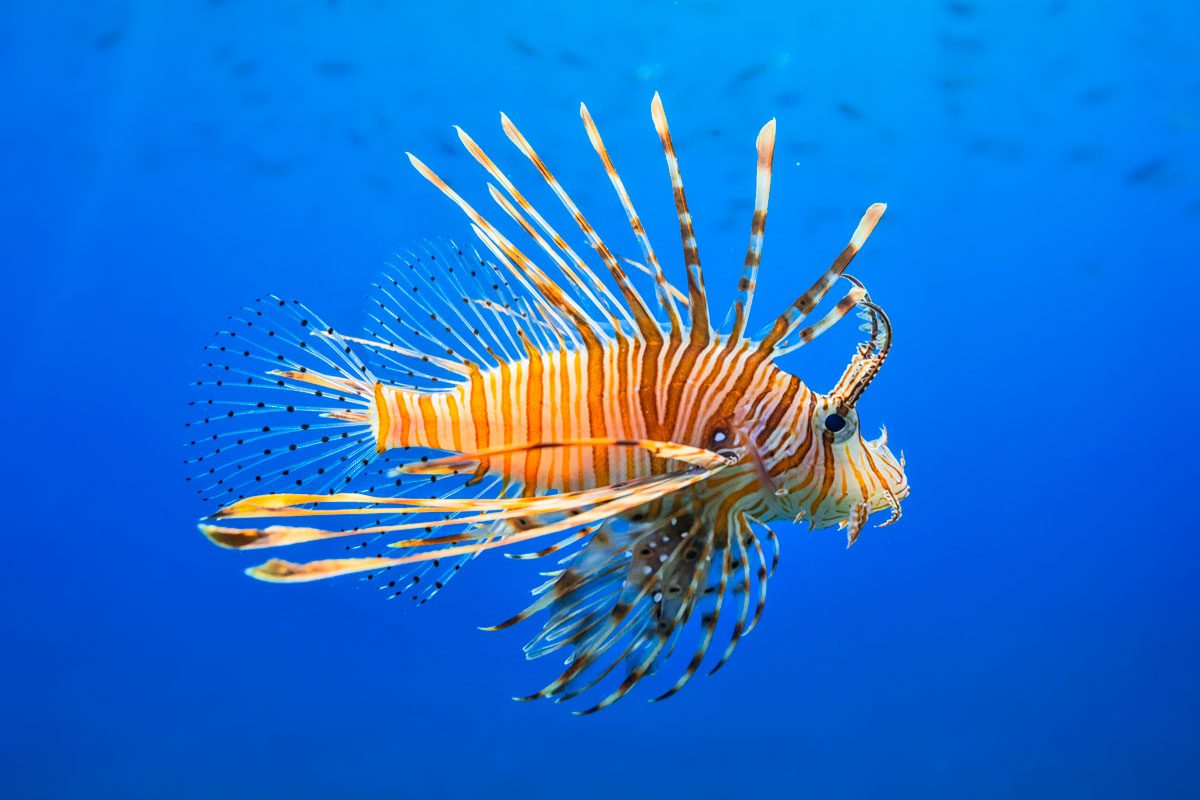
13 of the Weirdest Deep-Sea Creatures in the Ocean

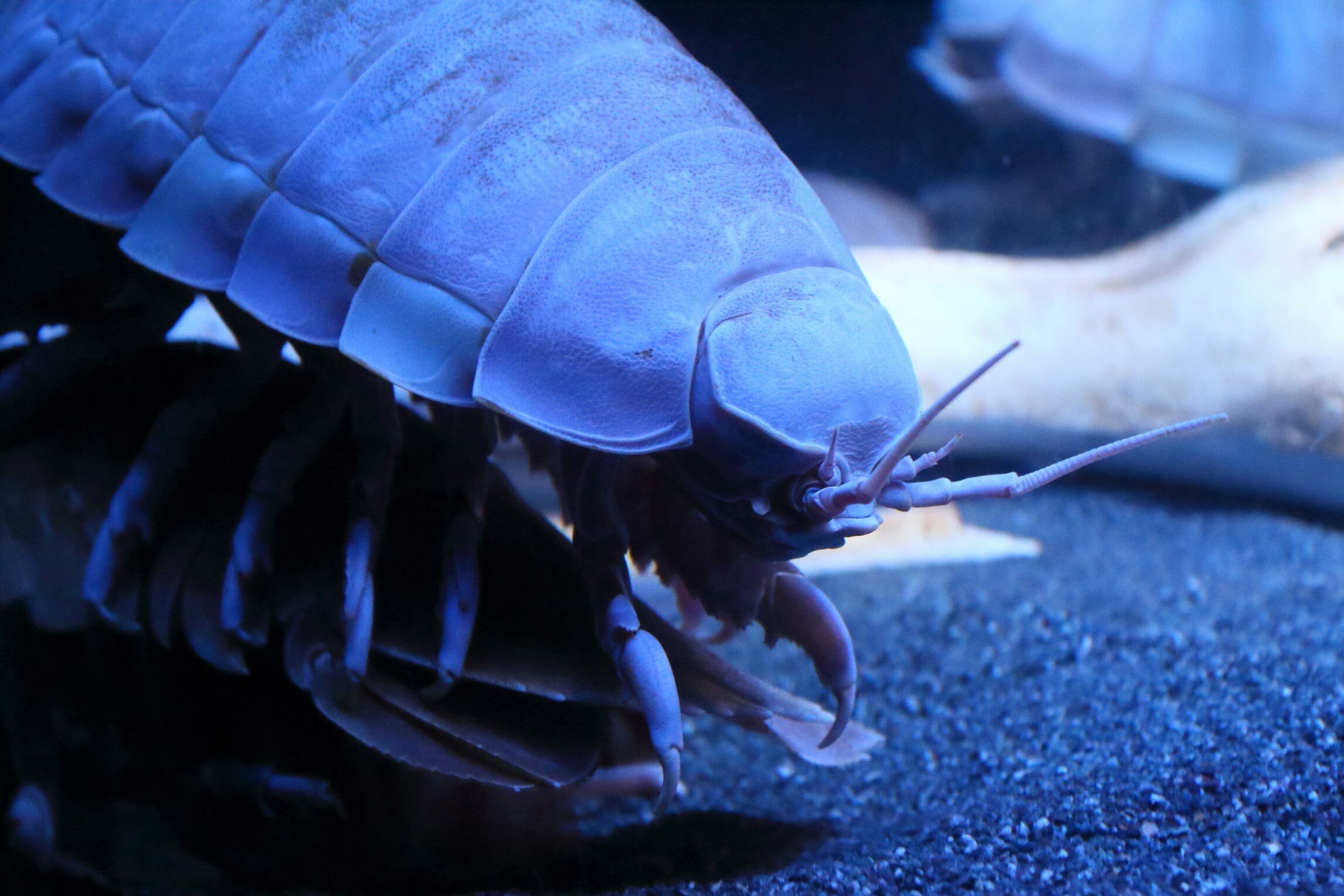
Giant isopod
Scientific name: Bathynomus giganteus
About 5,000 species of crustaceans in the order Isopoda live in Earth’s oceans. According to the National Oceanic and Atmospheric Administration, they all have two pairs of antennae, compound eyes, six-segmented abdomens and four sets of jaws. That’s not all. Their seven-segmented bodies have seven sets of legs for walking—and more legs for swimming and breathing.
This massive, 2.5-foot species—one of nine in the genus Bathonymus—lives in the cold waters of the Pacific and Atlantic oceans, at a depth of more than 8,000 feet. It can scavenge dead whales, fish and squid. You’ll find a lot of creepy things at the bottom of the ocean, but the giant isopod may just take the cake.

Leafy sea dragon
Scientific name: Phycodurus eques
This 14-inch deep-sea creature, closely related to sea horses and pipefish, makes its home in the waters off south and east Australia, according to National Geographic. It has a multitude of yellowish or greenish appendages that allow it to camouflage itself as seaweed. The leafy sea dragon eats tiny crustaceans called sea lice, and as with sea horses, it designates the male of the species to incubate eggs.

Chambered nautilus
Scientific name: Nautilus pompilius
These ancient, eight-armed cephalopods are among the most fascinating deep-sea sights. Endangered in their home habitats in the Indo-Pacific, these deep-sea creatures have existed for 500 million years. They survive by scavenging dead animals from the seafloor, using their tentacles (called cirri) to pry the dead animals from their shells. Nautilus shells contain chambers that are filled with air for buoyancy—except for the last and largest of them, which contains the animal itself. They lay the largest eggs (5 centimeters) in the invertebrate kingdom, which take a year to hatch.
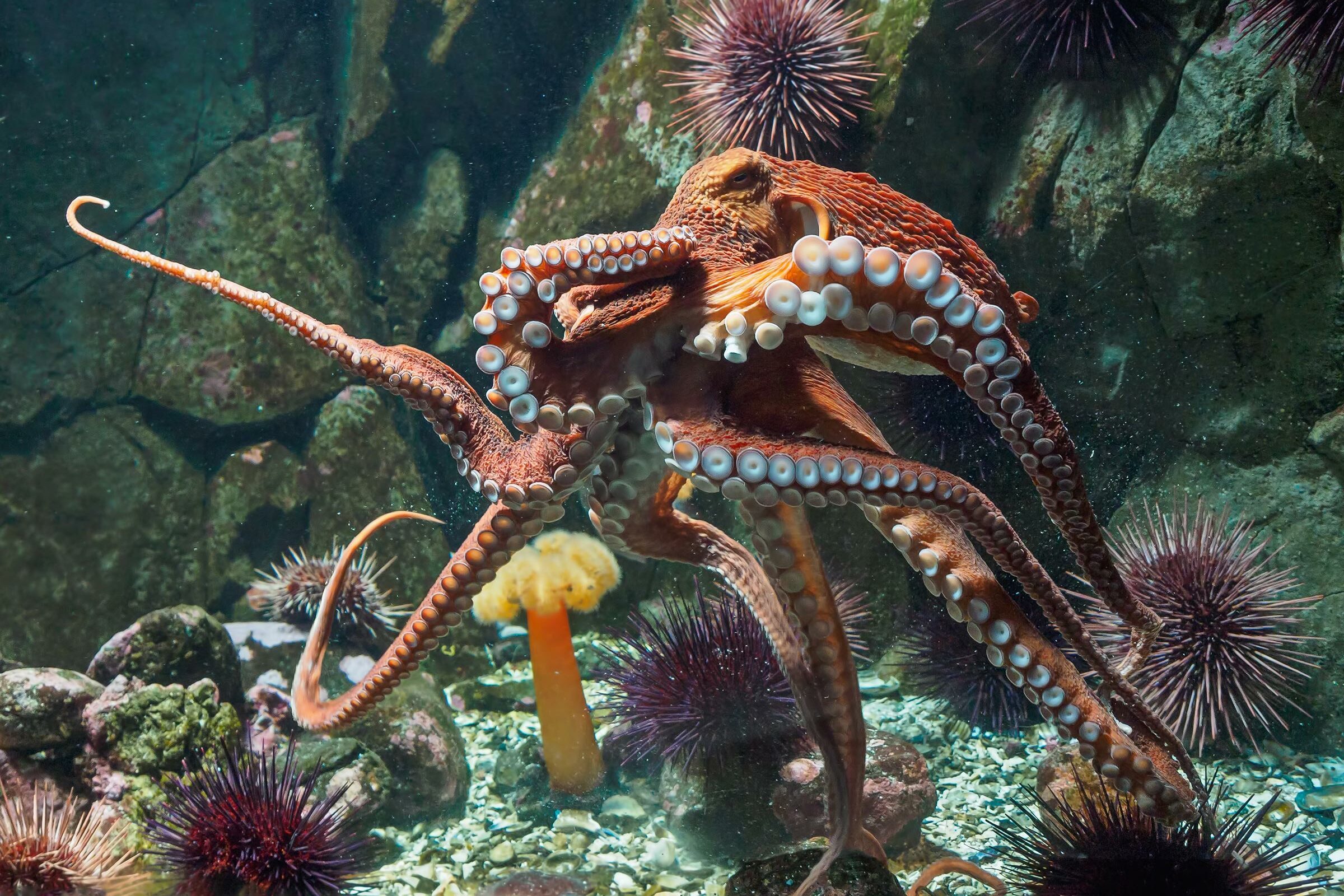
Giant Pacific octopus
Scientific name: Enteroctopus dofleini
A solitary, foraging ocean predator around Japan, Alaska and California, this is the mother of all octopuses. The largest recorded giant Pacific octopus weighed 600 pounds and measured 30 feet, according to Oceana, making it one of the biggest animals in the world. This deep-sea creature can easily camouflage itself, and a squirt of its ink is deadly to other octopuses that threaten it. It can puncture its prey (including lobsters and small sharks) with its beak during the four to five years of its life. Like other octopus species, this one has three hearts and nine brains. And that’s not the only reason it’s a massive brainiac; this is one intelligent animal.

Pigfish
Scientific name: Congiopodidae
Living in up to 2,000 feet of cold water, this family of six species of long-nosed, scaleless fish is native to the Southern Hemisphere. One species in South Africa is thought to molt its skin like a reptile. Don’t confuse the pigfish with Florida’s hogfish; the former is named for the way it roots around the seafloor with its snout, trying to rustle up prey.

Shaggy frogfish
Scientific name: Antennarius hispidus
Looking like a Muppet but acting like a vicious predator, this denizen of coral reefs can swallow its prey—often as large as itself—whole. It can camouflage itself while lurking on the ocean floor … before striking fast to gobble any unsuspecting fish swimming nearby. A unique feature of this deep-sea creature is the pompom-like lure on its head, which beckons potential meals.
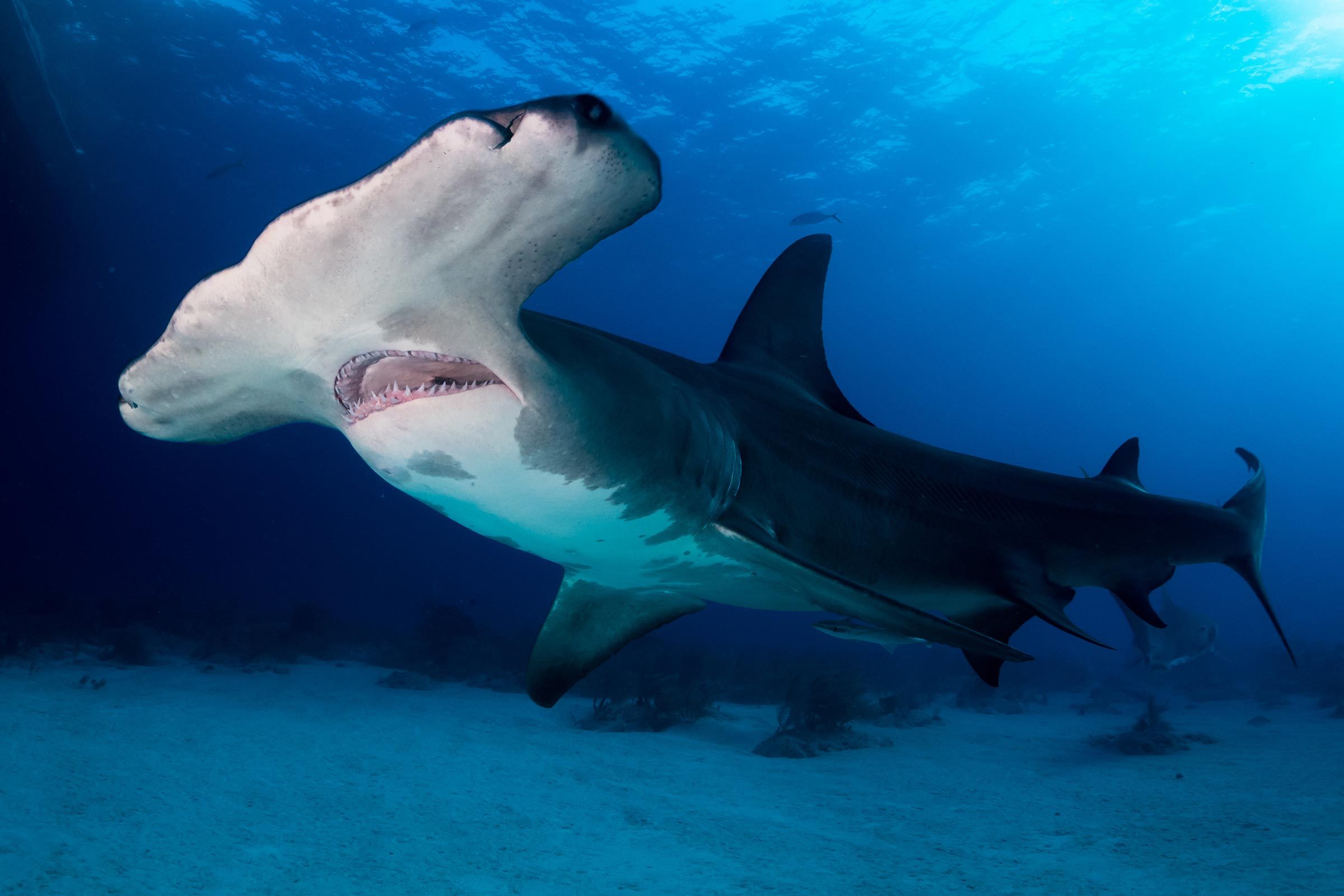
Great hammerhead shark
Scientific name: Sphyrna mokarran
Existing worldwide at depths up to 1,000 feet, the largest species of hammerhead grows to about 18 feet long. A female produces a litter of up to 56 pups that—get this—hatch inside her body. Sharks are often misunderstood, and the hammerhead is no different. But if you’ve heard that the great hammerhead is a fearsome creature, you’re not wrong. According to the MarineBio Conservation Society, it evolved its rectangular-shaped head to maximize its ability to detect prey through chemical, thermal and electrical changes. This deep-sea creature is a known cannibal—although it also enjoys a meal of stingray or crab.
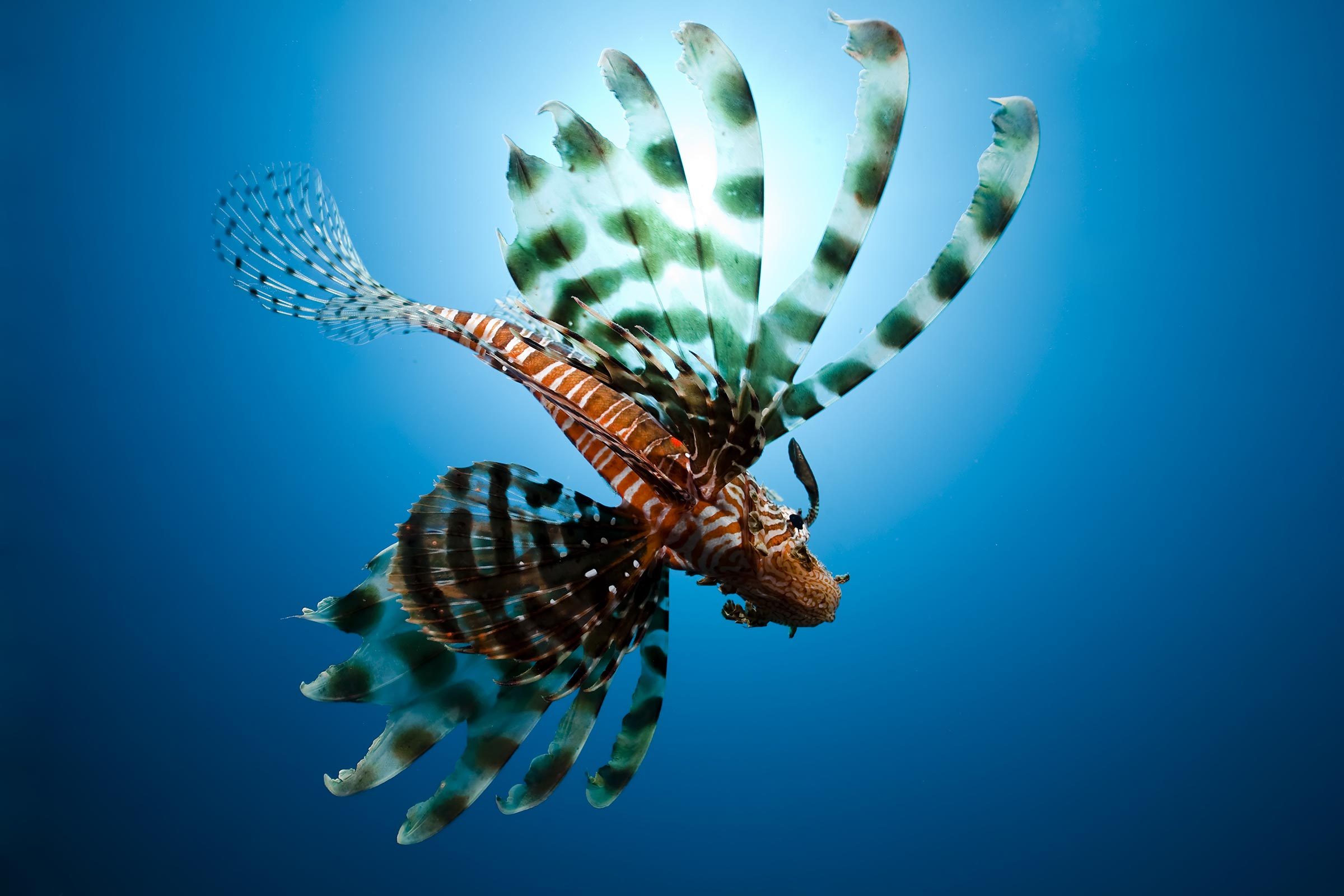
Lionfish
Scientific names: Pterois volitans and Pterois miles
A top predator, lionfish are hunted by no other deep-sea creatures, and each lays as many as 2 million eggs per year. It’s no wonder these denizens of the Indian Ocean—transplanted via the aquarium trade to Atlantic and Caribbean waters—are taking over and decimating native species as they go. Their 32 or so brightly colored spines (which scare off would-be snackers) are venomous and can cause everything from sweating to paralysis. We have to admit, though, with their fanlike fins, these colorful fish are a sight to behold.
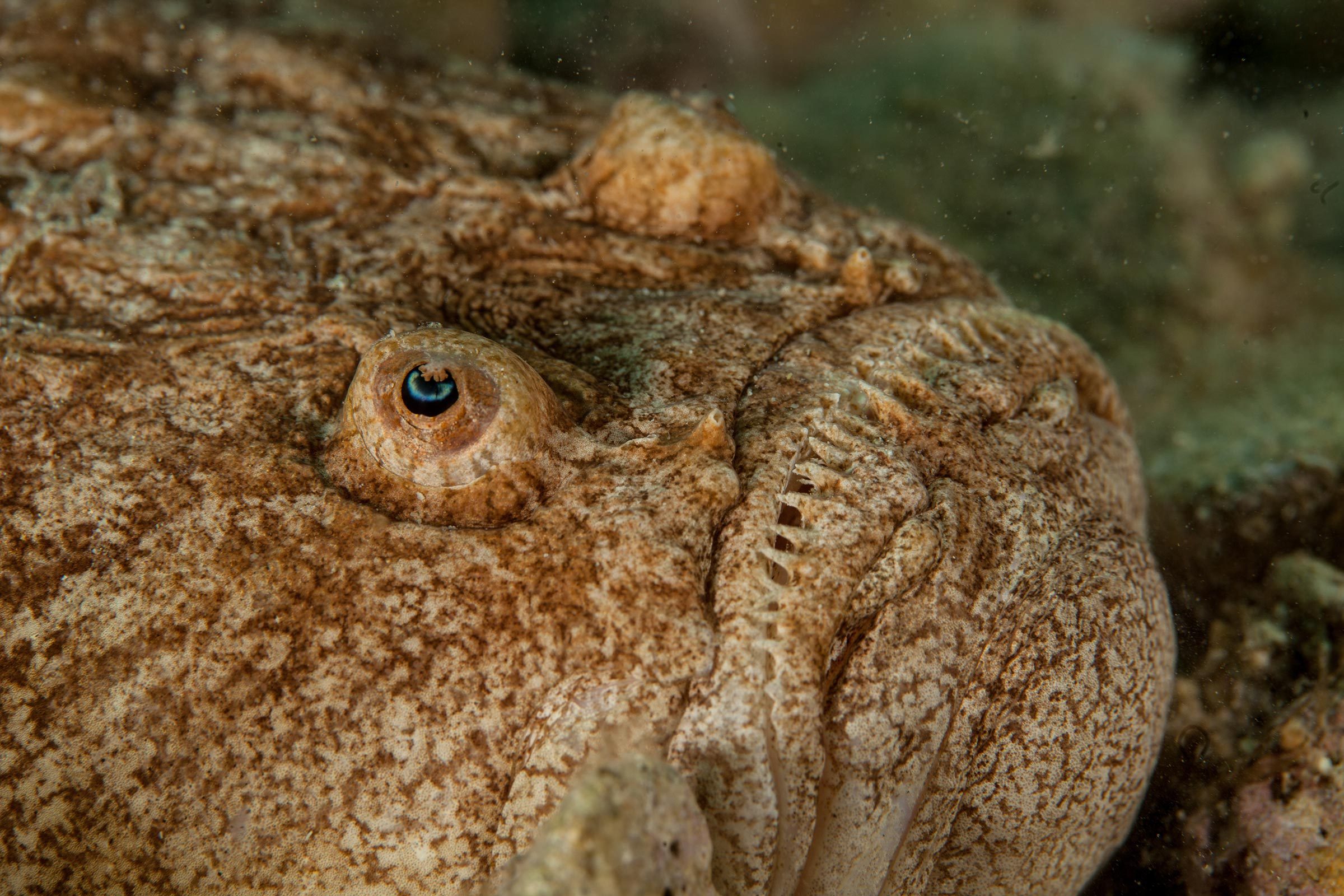
Stargazer fish
Scientific name: Uranoscopidae
These deep-sea Mediterranean and Atlantic fish have mouths, nostrils and eyes on the tops of their heads, the latter of which enable them to spot their prey from below, then quickly rise and strike. As if that didn’t make them terrifying enough, the 50-odd species of stargazer fish can also deliver electric shocks and venom, according to the Florida Museum.

Viperfish
Scientific name: Chauliodus
With a name like viperfish, you know these deep-sea dwellers (some living at depths of 3,000 feet) aren’t the friendliest fishes in the ocean. The whole genus features hinged jaws that open at a 90-degree angle, with needle-like teeth. One 40-million-year-old species native to Australia actually has the largest teeth of any fish relative to its head size—they’re so big that they don’t even fit in its head.
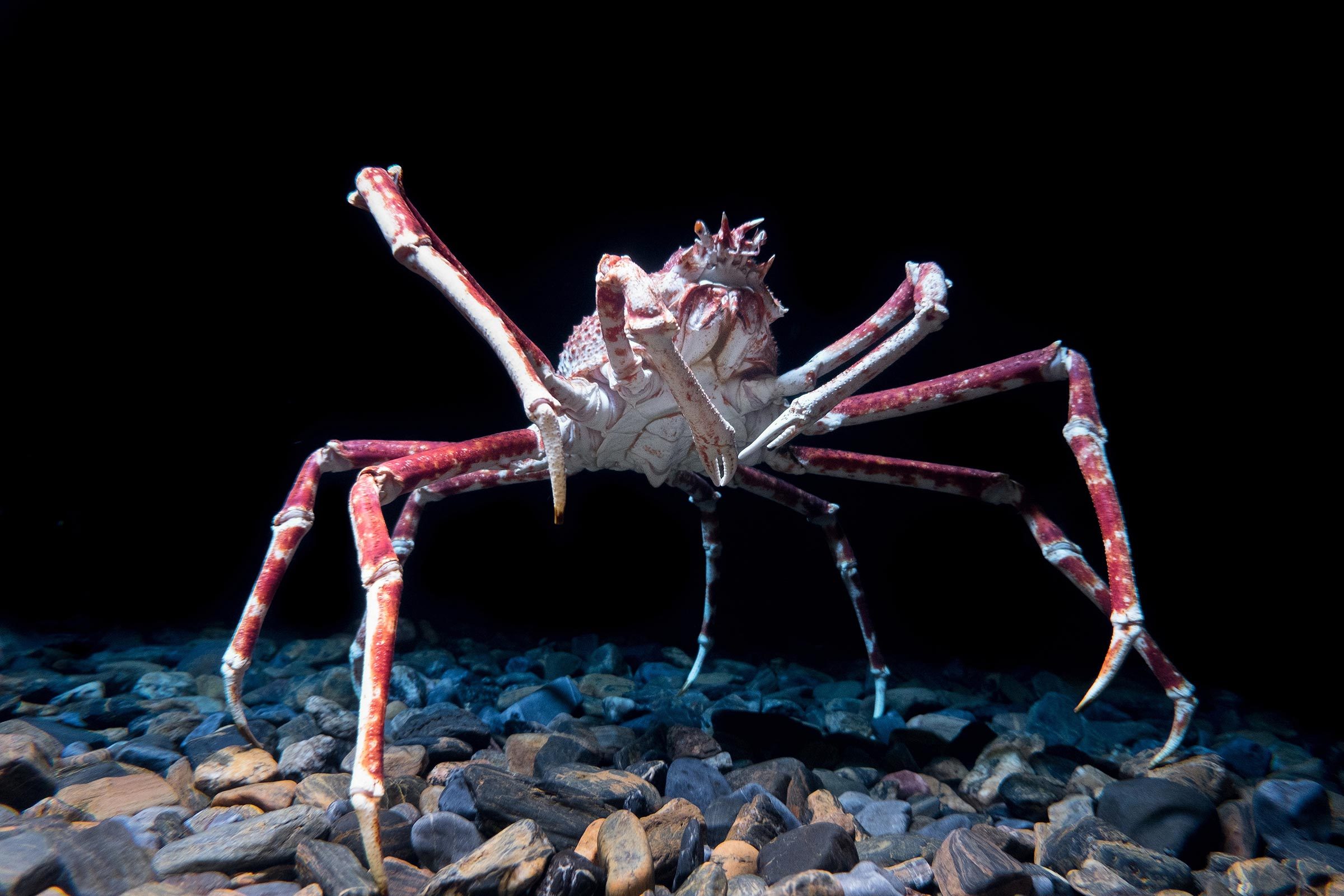
Japanese spider crab
Scientific name: Macrocheira kaempferi
Spider crabs live at depths of 1,000 feet (although some have been found as deep as 1,800 feet) in Pacific waters around Japan. The biggest arthropods on Earth, some grow as monstrously large as 12 feet from the tip of one claw to another. They live up to 100 years, scuttling around the ocean floor to find their food, although these deep-sea creatures often lose a delicate limb or two in their lifetimes.
![wolffish [family Anarhichadidae] behind dusty glass at sea life, fish looking at the camera](https://f-cce-6069-v1.rdu.r.tmbi.com/wp-content/uploads/2019/04/shutterstock_1276922980.jpg)
Atlantic wolffish
Scientific name: Anarhichas lupus
A 5-foot-long bucktoothed native of the North Atlantic, this deep-sea creature lives among the rocks at around 1,600 feet below the surface, just off the coast of places like Maine. It forages for its dinner of crabs, sea urchins and mollusks—its large head and strong jaws allow it to crush the exoskeleton of even the most tenacious critter.

Sixgill shark
Scientific name: Hexanchus griseus
The sixgill shark (a juvenile of the species is shown here) swims around in the serious deep—up to 8,200 feet. The 16-foot predator bides its time until nightfall, when it rises to the surface of the ocean to feed on rays, squid, crabs and other sharks.
Why trust us
At Reader’s Digest, we’re committed to producing high-quality content by writers with expertise and experience in their field in consultation with relevant, qualified experts. We rely on reputable primary sources, including government and professional organizations and academic institutions as well as our writers’ personal experiences where appropriate. We verify all facts and data, back them with credible sourcing and revisit them over time to ensure they remain accurate and up to date. Read more about our team, our contributors and our editorial policies.
Sources:
- NOAA Ocean Exploration: “What is an isopod?”
- Discover Wildlife: “It looks like an alien, feasts on whale blubber, has multiple legs and hasn’t changed for millions of years – meet this creepy, mysterious deep-sea giant”
- National Geographic: “Leafy Sea Dragon”
- American Museum of Natural History: “How is a Nautilus Different from a Squid?”
- Oceana: “Giant Pacific Octopus”
- Fishbase: “Family Congiopodidae – Racehorses or pigfishes”
- Florida Museum: “Lachnolaimus maximus”
- Aeon: “The insatiable hairy frog fish”
- MarineBio: “Great Hammerhead Sharks, Sphyrna mokarran”
- National Ocean Service: “What is a lionfish?”
- Florida Museum: “Northern Stargazer – Astroscopus guttatus”
- Australian Geographic: “The glass-fanged viperfish is nightmare material”
- National Geographic: “Deep Sea Creatures Photos”
- Smithsonian National Museum of Natural History: “Japanese Spider Crab”




















